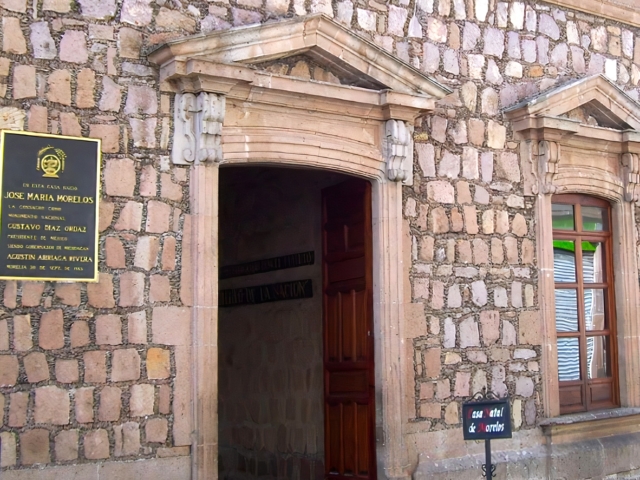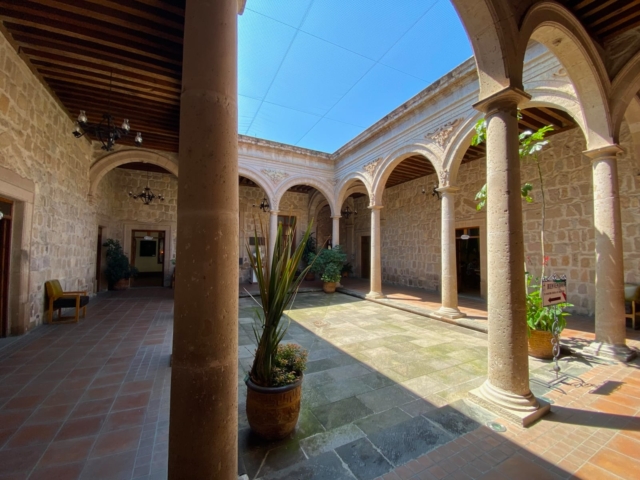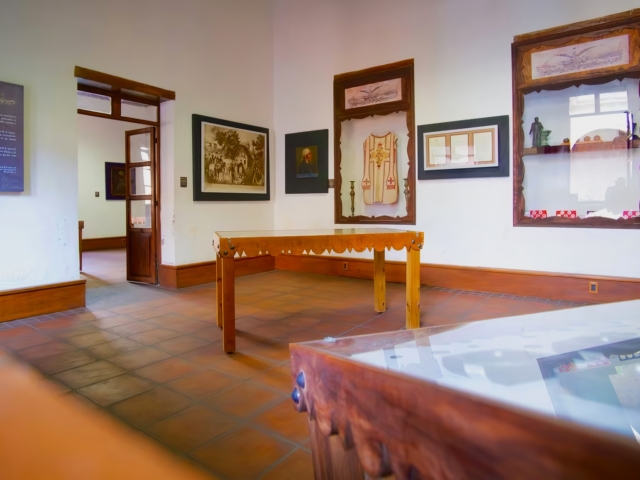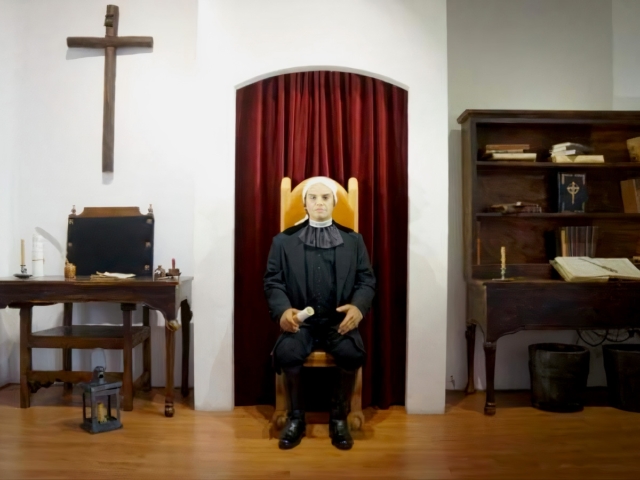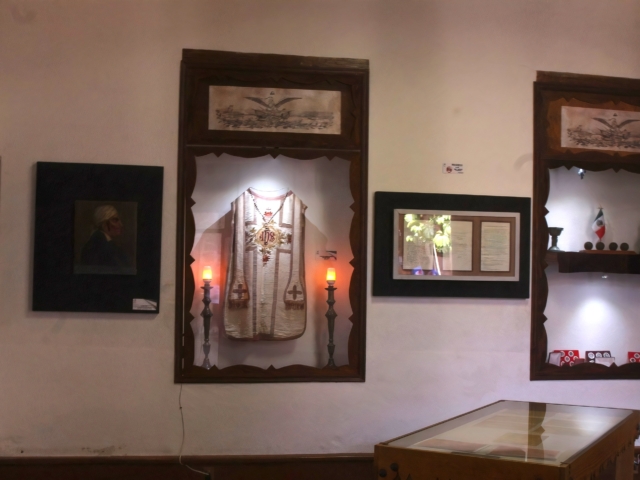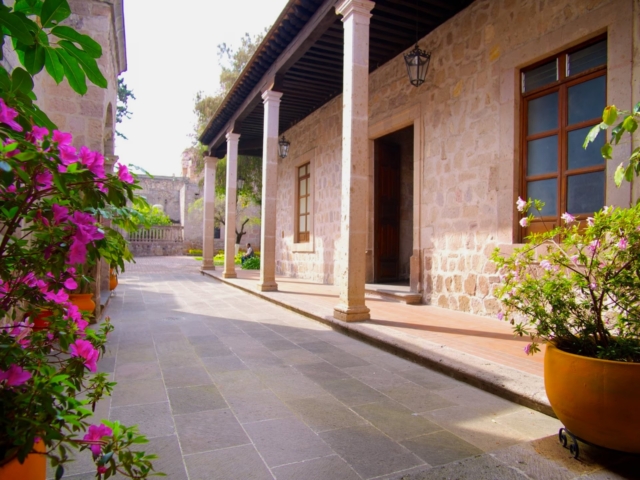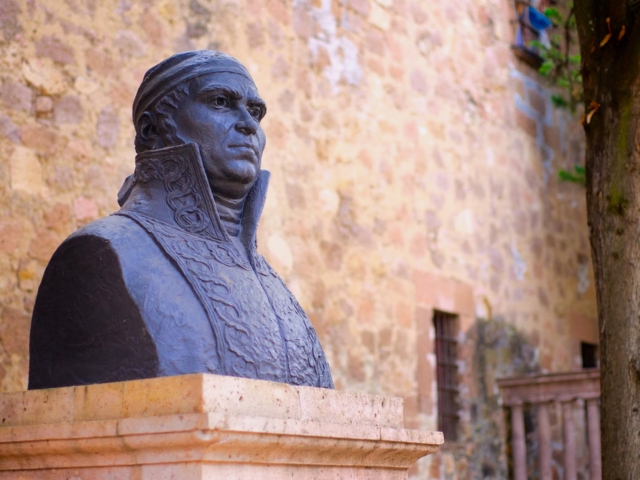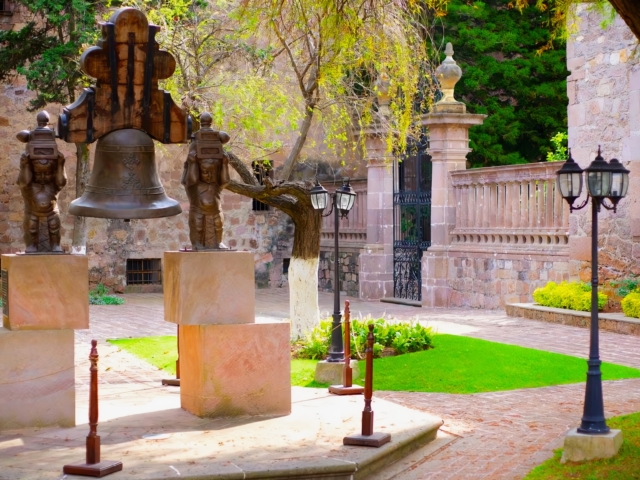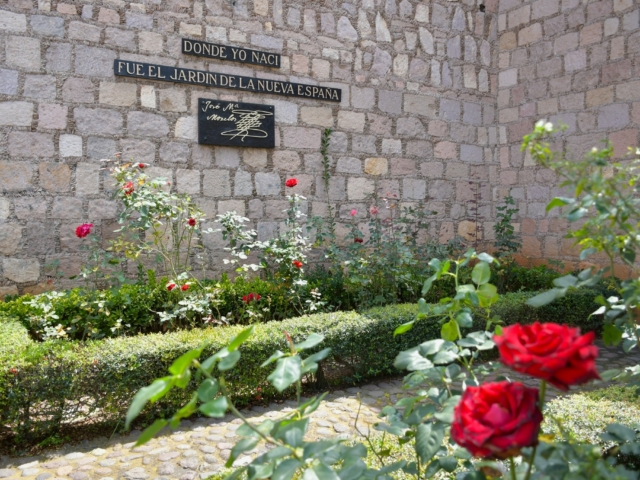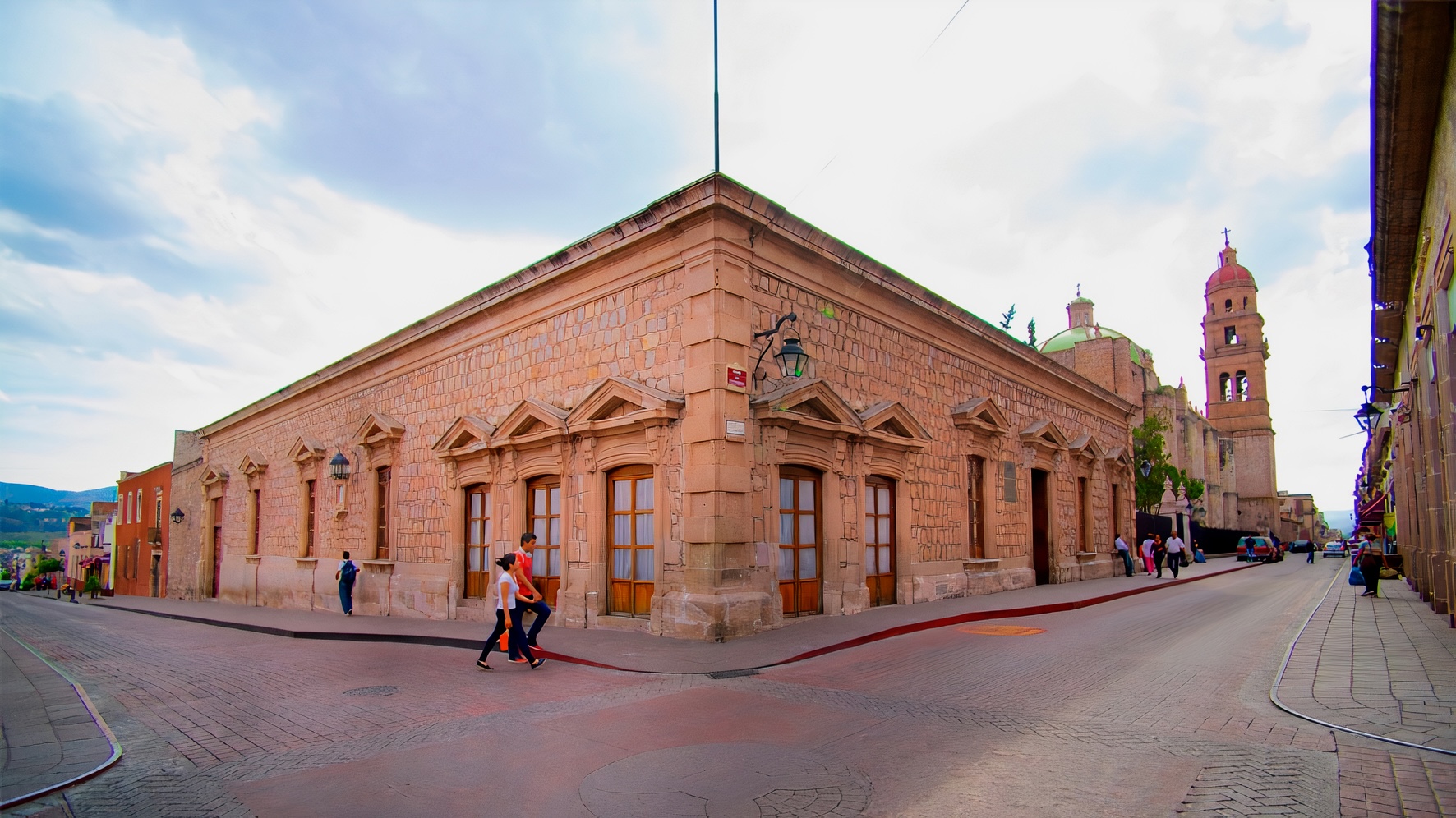
Adress
Corregidora 113 Centro, 58000 Morelia, Michoacán, México.
GPS
19.700819309464, -101.19253098965
Phone
Monday
10:00 – 19:00
Tuesday
10:00 – 19:00
Wednesday
10:00 – 19:00
Thursday
10:00 – 19:00
Friday
10:00 – 19:00
Saturday
10:00 – 18:00
Sunday
10:00 – 18:00
KNOW MORE PLACES
VISITA OTRAS LOCALIDADES
The Morelos Birthplace Museum is a space that commemorates the hero of Independence, we know that, but what is not well known is what that place was like more than two hundred years ago, which is when the leader was born.
The museum was not a private house. It is known that this space belonged to the Augustinian order since the city's origins, at least since they were given the land; what is known is that, at least by the first third of the 17th century, there was already a farm in that place, possibly an Augustinian school opened by Fray Diego de Basalenque, who was a chronicler who lived in the convent of San Agustín.
The area was part of the Augustinian convent until 1856, when “by the grace of the reform laws, that part was disentailed; some time later it was sold to private individuals and the space has had many uses”; among which are mentioned a business called Tortas Morelos and a grocery store named La Providencia.
The property needs to be divided into two parts: the Casa Natal de Morelos itself and the green area, whose name is Jardín de la Nueva España; they are now a single entity but it was not always like that, since it was opened to the public in 1973, since some small houses that were there, which can be seen in old photos, were demolished.
Yes, the Casa Natal de Morelos was next to other private properties for several years, because that museum area was inaugurated before, specifically on September 30, 1965, by Governor Arriaga Rivera and President Gustavo Díaz Ordaz. Eight years later, those houses were demolished to open the Jardín de la Nueva España to the public, attached to the Casa Natal de Morelos Museum.
En la época del nacimiento de Morelos, era una casa de la salud u hospital atendido por los frailes agustinos. El mito que se transmitió por los primeros biógrafos de Morelos y por la tradición oral decía que la mamá de Morelos, Juana Pavón, regresaba del mercado de San Juan de Dios, que se ponía donde hoy está la plaza Ocampo y que al momento de pasar por la calle García Obeso, entonces llamada De la Estampa, sintió los dolores del parto y se metió al portón para dar a luz.
The most documented and recent research indicates otherwise: Morelos' father, Manuel Morelos, five years before the birth of his son, in 1760, bought a piece of land on the street called Mira al Llano, today Abasolo, a place where it is thought the family lived in a house made of adobe and a tile roof and it is said that it was in front of the wall of the convent's orchard, which covered the entire street to the Chiquito River.
It is most likely that Juana Pavón, on the morning of Sunday, September 30, 1765, felt the pains of childbirth and left her house in the direction of the Augustinian hospital (the current Casa Natal); in addition, a comadre of hers, who had been godmother of a previous son, gave money to that hospital, so it is most likely that the birth of José María Morelos in that place was totally planned.
Furthermore, the gate next to the perpetual light, which indicates where Morelos was supposedly born, did not exist when he was born. This is the result of later renovations, such as one in 1890 and another before opening it as a Museum, in 1963 when the property was acquired by the state government.
The person in charge of museography, that is, acquiring material and documents about Morelos, was Arturo Arriaga Ochoa, a relative of the governor at the time, Agustín Arriaga Rivera.
The animatronic Morelos
The history and feelings of the nation are still present and ready to be told to the new generations in the voice of José María Morelos himself. An animatronic installed in 2010 in the Casa Natal de Morelos Museum speaks and tells the story.
Made in Germany, this robot tells in first person where the Servant of the Nation was born, as a celebration of the Bicentennial of Independence.
Almost 15 years after its inauguration and opening to the public, this robot continues to be visited not only by locals, but also by national and international tourists who wish to come and see the New Spain priest, soldier and politician who stood out as the insurgent leader of the second stage of organization in the Mexican War of Independence.
The animatronic tells the story of the Servant of the Nation out loud, wearing the traditional bandana with which we identify Morelos and dressed in black, a bit like a muleteer, a bit like a priest.

